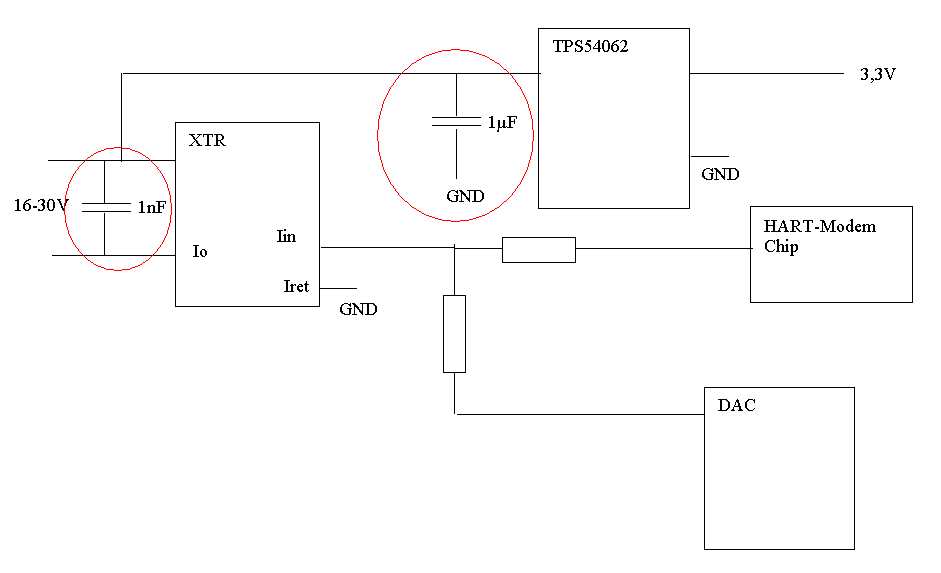Hi,
I like to use the XTR115 (or 116/117) followed by a step-down converter (for example TPS54062) to build a 4-20mA 2-wire HART Transmitter.
The following converter should be used to generate a 3,3V Voltage with current higher than 4 mA.
The step-down converter is connected to the XTR-Pins 7 (7,5 – 36V) and Pin 3(IRet).
The TPS54062 datasheet says, it requires a input decoupling capacitor of at least 1µF.
The XTR115 don’t like larger capacitors between Pins 7 (V+) and Pin 4(IO). The capacitor at the input pins should be 10nF or 1nF with HART.
How do I handle the problem with the input capacitors? Is there an application note available on how to connect the XTR with a step-down converter?
Is there any other XTR that works with a converter and HART?
Thanks
Martin


